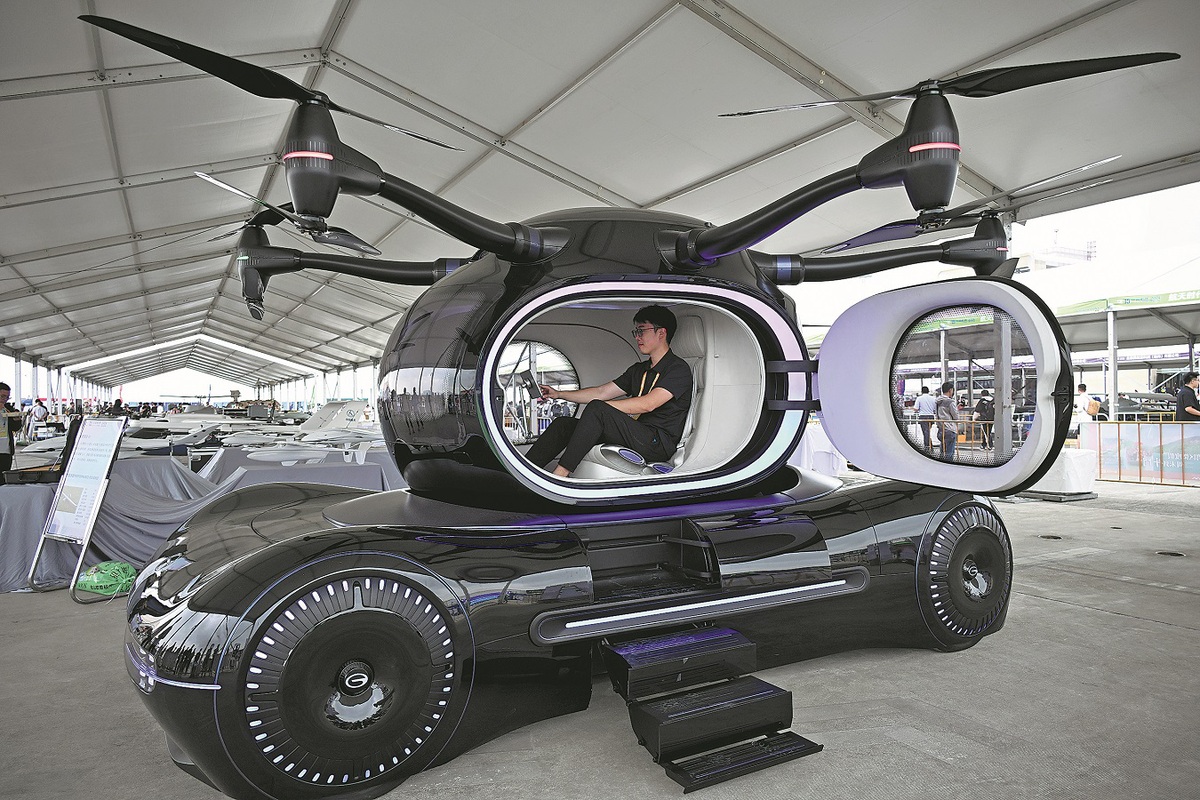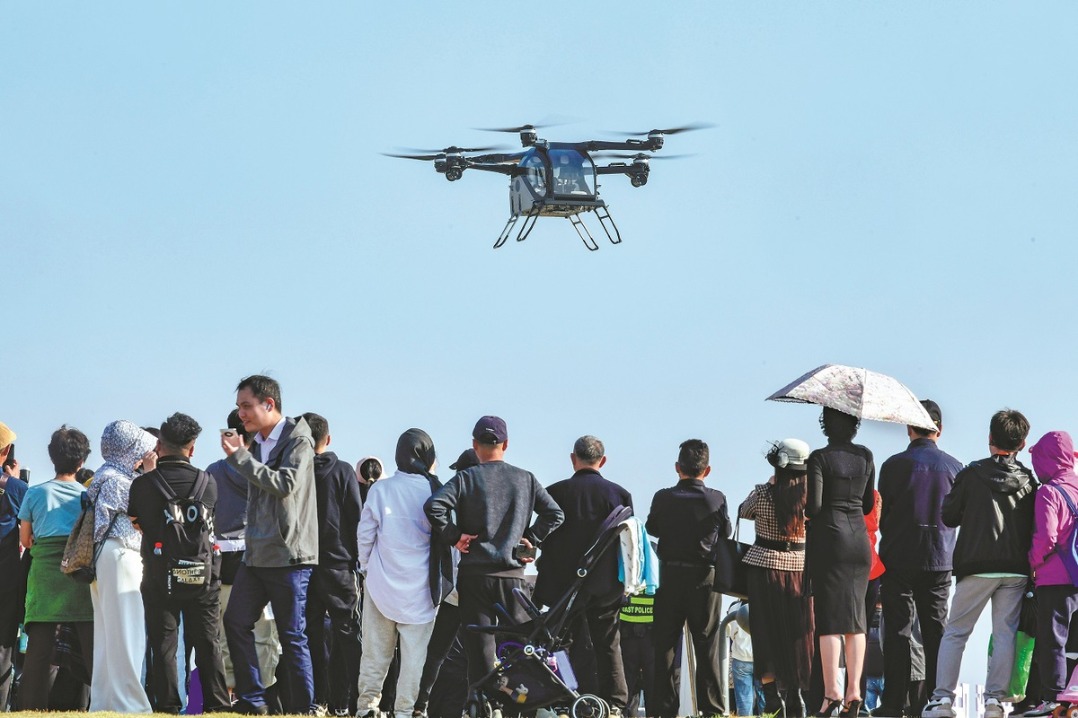Commercial flying cars gearing up for liftoff
Purchasing advanced vehicles a step closer, 'low-altitude economy' set for boost


'Invisible' roads
Air traffic control is another key challenge. While autonomous driving systems rely on sensors such as radar, cameras and AI perception, flying cars require dedicated low-altitude airspace coordination.
Chinese scientists are already working on the issue, by establishing "invisible roads" in the airspace below 3,000 meters to ensure orderly flight, Xinhua reported.
Qu Tengteng, a researcher at Peking University's College of Engineering, and her team have developed a geospatial grid system to map low-altitude airspace.
The system converts three-dimensional spatial coordinates into binary codes, which create a real-time grid of airways. These invisible roads would help prevent collisions between low-altitude aircraft, and also let flying vehicles avoid buildings.
"With this air road network, we can design traffic rules and add 'traffic lights' to avoid accidents," Qu said.
To enhance air safety further, Li Zhongkui, a professor at the same college, developed an unmanned aircraft vehicle trajectory planning system.
Inspired by how birds in flocks coordinate with one another to avoid collisions, the system uses swarm intelligence to regulate the movement of low-altitude vehicles both online and in real-time, ensuring they maintain safe distances and fly in harmony.
Experts are also working to prevent noise pollution associated with flying cars. A 2022 Deloitte survey found that 58 percent of respondents were concerned about noise.
Lyu Benshuai, an assistant professor at Peking University's College of Engineering, and his team developed a rapid prediction model for rotor noise.
The model helps predict how different blade shapes and configurations affect noise levels, allowing for more efficient noise-reduction designs.
"We can do quite a lot in aeroacoustic optimization. For example, rotors mounted at the rear of the fuselage are often much noisier than those at the front, while blades with suitable geometry and serration designs generate less noise," Lyu said.
The team is collaborating with Chinese tech companies like Huawei and Ecovacs to implement these noise-reducing innovations. "We hope to bring these scientific advances to market soon," Lyu added.
Public acceptance is another barrier. Sixty-one percent of the respondents to the Deloitte survey said they fear severe consequences from mid-air accidents.
To build trust, EHang has focused on "low-altitude tourism" in provinces including Anhui and Guangdong. Analysts at Soochow Securities said China's low-altitude tourism market is worth 6 billion yuan a year.
XPeng AeroHT demonstrated automated separation and docking technology in Shanghai's financial center Lujiazui late last year, while assuring the spectators about the ease of flying.
In late March, its flying car performed a trans-lake flight in Changde, Hunan province. Flying to a height of 40 meters, it landed at the original location safely after circling over Liuye Lake, a scenic spot in the city.
Aerial route
Earlier this year, XPeng AeroHT joined forces with Hainan to introduce the "aerial round-the-island scenic highway" in the tropical province.
The nearly 1,000-km aerial route, the first of its kind, will feature 42 observation decks, 24 parking spots and 40 stations, offering immersive flying car journeys, enabling "flying while playing, and flying across the entire island".
The venture also aims to complete over 20 flying car campsites from 2026 to 2027, achieving full coverage of scenic spots along the route.
Hainan's tropical island appeal and abundant natural resources are prime drivers for low-altitude economic development, said Jiang Hong, deputy director of the Hainan Provincial Development and Reform Commission.
Qiu Mingquan, vice-president of XPeng AeroHT, said that flying car excursions are poised to redefine self-driving tours and become a distinctive feature of tourism in Hainan.
The flying car sector will progress through three different stages, said Zhang Yangjun, a professor at the School of Vehicle and Mobility at Tsinghua University.
The first is expected to start this year, with cargo eVTOLs being commercially deployed and passenger eVTOLs beginning demonstration applications in specific scenarios.
In 10 years, both cargo and passenger eVTOLs will become the primary transportation vehicles for low-altitude travel, revolutionizing urban and regional mobility.
The third stage, around 2050, is expected to see flying cars reach mass-market maturity, said Zhang.























